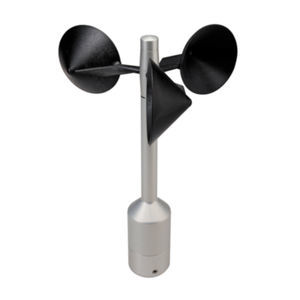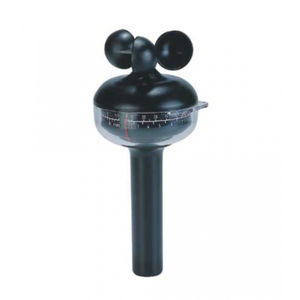
- Products
- Catalogs
- News & Trends
- Exhibitions
Thermoelectric wind sensor 4.3324.32.0xxwith analog output

Add to favorites
Compare this product
Characteristics
- Technology
- thermoelectric
- Other characteristics
- with analog output
- Air velocity
Max.: 60 m/s
(196.85 ft/s)Min.: 0.3 m/s
(0.98 ft/s)
Description
The Classic Combined Wind Sensor measures the horizontal wind speed and direction in a single unit
The Classic series of wind transmitters are designed for applications where accuracy and reliability are paramount.
The Classic Combined Wind Sensor measures the horizontal wind speed and direction with an analogue output which can be transmitted to a display, recording instrument, data logger or process control system. For winter operation the sensor is equipped with electronically regulated heating to guarantee the smooth running of the ball bearings and to avoid ice formation on the body.
The housing is made of anodised aluminium for good corrosion resistance and long life. Labyrinth seals and O-rings protect the sensitive internal parts from precipitation. The instrument is designed for mounting to a mast tube and the electrical plug connection is situated in the transmitter shaft.
WIND SPEED
Measuring range 0.3 - 60 m/s (model dependent)
Accuracy - ±0.5m/s or ±2% of measured value
Delay distance 5m
Electrical output - Model dependent
WIND DIRECTION
Measuring range 0-360°
Resolution - 1° to 2.5° (model dependent)
Accuracy ±1.5°
Damping coefficient - 0.2-0.3
Starting value <0.6m/s at 90°
Electrical output - Electrical output Model dependent
GENERAL
Operating voltage - Sensor - Model dependent
Heating 24 V AC/DC; 40W
Ambient temperature - -35° to +80° C
Electrical connection - Multi-pin plug
Mounting - onto mast tube
Catalogs
No catalogs are available for this product.
See all of Biral‘s catalogsRelated Searches
- Humidity and temperature transmitter
- Anemometer
- Wind sensor
- Cup anemometer
- Ultrasonic anemometer
- Weather sensor
- Wind direction sensor
- Precipitation sensor
- Cup wind sensor
- RS-485 anemometer
- Rain sensor
- Compact anemometer
- IP65 anemometer
- Anemometer with analog output
- IP67 anemometer
- IP54 wind sensor
- IP55 anemometer
- IP55 wind direction sensor
- Rugged anemometer
- Wind sensor with analog output
*Prices are pre-tax. They exclude delivery charges and customs duties and do not include additional charges for installation or activation options. Prices are indicative only and may vary by country, with changes to the cost of raw materials and exchange rates.









